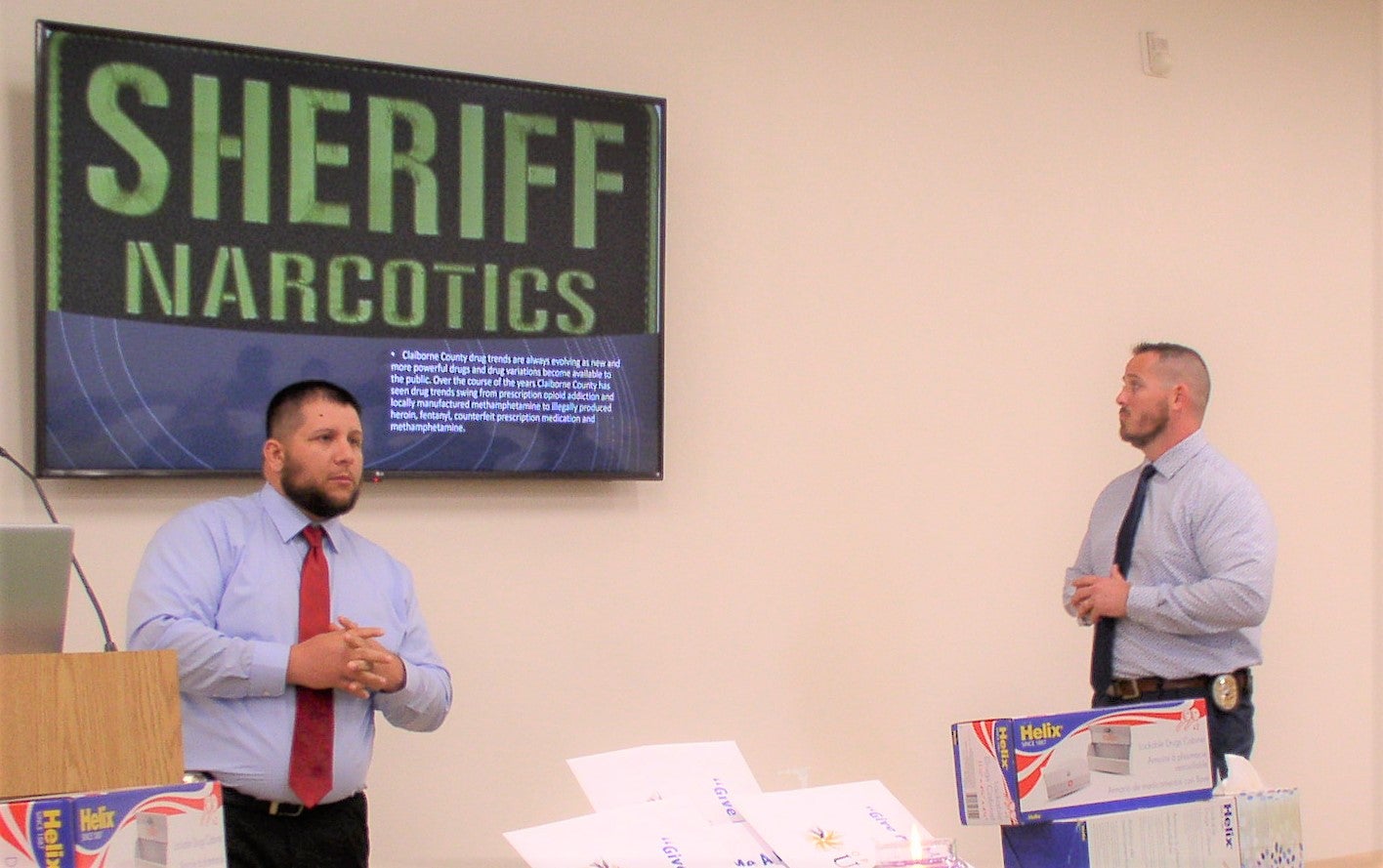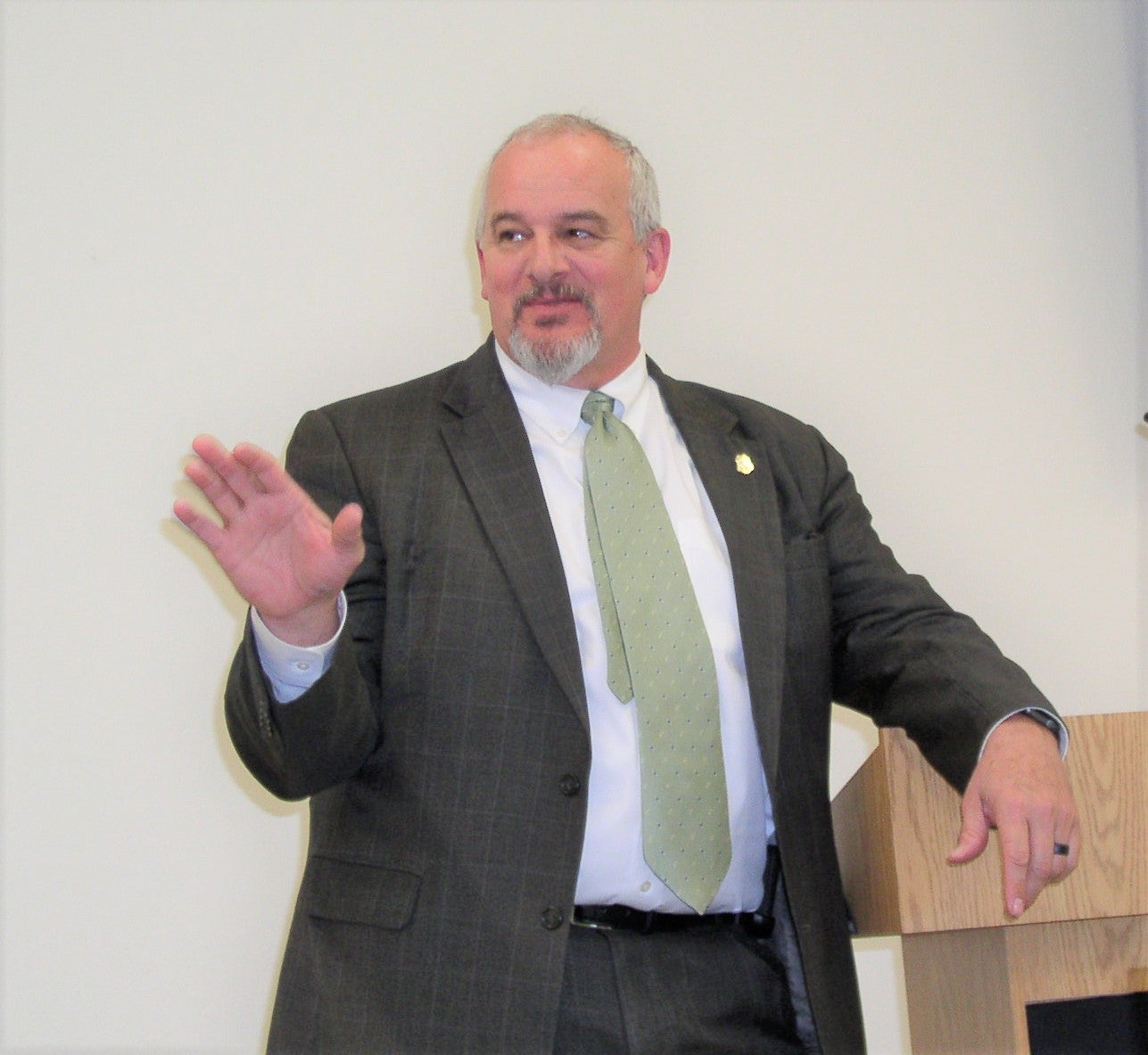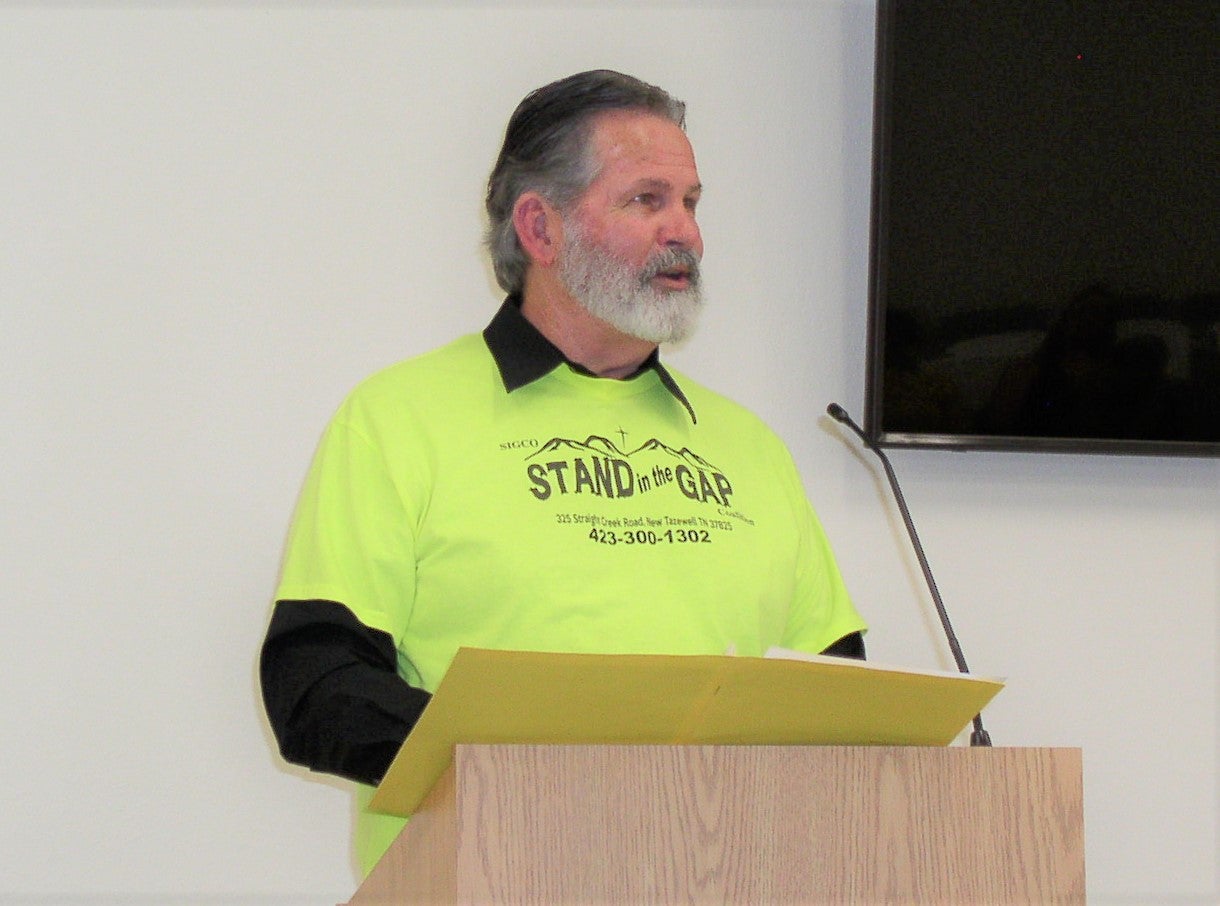Standing in the gap for all; SIGCO holds town hall meeting on drugs
Published 4:50 pm Sunday, March 20, 2022
|
Getting your Trinity Audio player ready...
|
“What we’re trying to accomplish here tonight is to separate truth and facts from myth and folklore. Communication plus education equals performance. You’re going to leave here and multiply what we’ve done tonight,” said Dan Spurlock, director of Stand in the Gap Coalition, during the opening moments of the town hall meeting.
Spurlock and his wife Hazle have spent the last 12 years expending their ‘blood, sweat and tears’ to bring hope and healing to folks in Claiborne County and the tri-state area. The two hold up a beacon for those weary of their current condition.
SIGCO is a nonprofit organization that has the blessing of the state to help those in loosening the bonds of substance abuse and family violence. The organization uses prayer, communication and prevention education in dealing with the abuse crisis.
Keynote speaker Tommy Farmer, TBI Special Agent and Director of the TN Dangerous Drugs Task Force, spent a good bit of time detailing the drug epidemic in Claiborne and surrounding counties.
Farmer said he’d spent years being told he would never be able to make enough arrests to quell the drug epidemic.
“Are we supposed to be the tip of the spear, the first ones to encounter the issue? I think we’re supposed to be the last line of defense. When the family is broken down and we have an issue – before law enforcement gets involved, the family knows there’s a problem. The family, the friends, the church, the community, the infrastructure, social services, schools – the judicial system was built to be a deterrent. It was never designed to incarcerate every individual,” said Farmer.
Until most recently, the majority of the drug market in Tennessee was methamphetamine related. Farmer says the TBI seized up to eight meth labs every day during the state’s heyday as the “meth capitol of the U.S.”
Restrictions on the sales of allergy and cold medications, which are part of the meth recipe, were a great deterrent to the illicit product.
“We reduced the amount of availability by 53 percent overnight. But, did we reduce the number of individuals addicted to it by the same percentage,” asked Farmer. “We’re not going to treat or arrest our way out of this. Treatment and arrests are acute – right now. We have to go as far upstream as possible and prevent drug abuse before it happens,” said Farmer.
Shutting down the meth labs effectively wiped out some of the problem – until a supply chain was introduced from south of the border, he said.
“We have so much methamphetamine coming across the border from Mexico, it’s incredible. And, it’s stronger, more powerful and it’s cheaper.” said Farmer.
U.S. pharmacists reported in a statistical finding in 2016 that they would need 79,265 kilograms of hydrocodone to cover the number of prescriptions written by the nation’s doctors. That equates, Farmer said, to 92 percent of the world’s consumption by one-fifth of the world’s population.
Tennessee was the number three per capita in consumption of hydrocodone during that timeframe.
“That amounts to somewhere in the neighborhood of 150-200 hydrocodones per citizen in the state of Tennessee above the age of thirteen,” said Farmer.
Fentanyl has replaced other favored ways to ‘get high.’ Farmer demonstrated the tiny amount of the drug it takes to kill someone, using a regular one serving sugar packet which is equal to one gram of dry powder.
One gram would equal one million micrograms of fentanyl. A grain of sugar weighs about 30 to 60 micrograms. The average dose would be 120 micrograms which equates to possibly two or three grains from the sugar packet.
Dr. Carroll Rose, who is the County Medical Examiner, spoke about his personal observations. He began by saying that he had signed a death certificate earlier in the week on a middle-aged man.
“The cause of death was fentanyl and cocaine,” said Rose. “One of the patients I had before I retired was a young guy in his late 20s. He had previously had an MRSA infection from IV drug use that got on the aortic valve and the valve was disfigured and nonfunctional. He had a valve replacement. To the month, this kid came back in. And the new heart valve already had MRSA (which is resistant to antibiotic treatment). Once you put in the sutures on an artificial heart valve, you’ve (introduced) a foreign body and you cannot get rid of the infection. It requires you to have another heart valve,” said Rose.
He said he called the surgeon who had replaced the original valve. Rose said the surgeon refused to replace it fearing the young man would continue abusing drugs.
The first operation, Rose said, cost $150,000. The second one would have been a more complicated procedure and would cost substantially more to perform, he said.
“These (infected heart valve and suture infections) are so common here in the county that I’ve had as many as three people in the hospital at one time,” said Rose.
Speaking of countywide drug overdoses, Rose said he had signed as many as three death certificates a week with the cause of death being drug-related.
He recalled having written prescriptions for pain medication to a terminal cancer patient only to have the patient’s daughter sell the drugs on the street.
There is a push, he said, to limit the amount of narcotic prescriptions physicians can write or be faced with a designation as a pain clinic.
For more information about Stand in the Gap Coalition, log onto: www.sigco.org. To contact the organization, email: www.standntgap@gmail.com or call: 423-300-1302.








